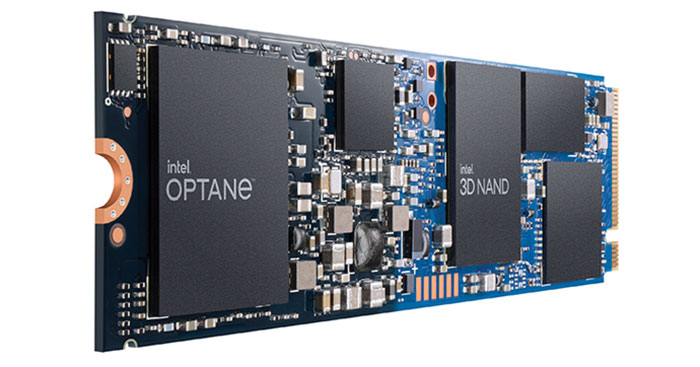Intel held a Memory and Storage Moment 2020 yesterday and announced six new products; three SSDs, and three Optane memory devices. Most of the devices are for data centre and enterprise deployment but there is one new SSD and one new Optane memory device for consumers that are worth looking at more closely.

Starting with the SSDs, they have all been updated to use Intel's 144-layer TLC and QLC NAND chips. Intel wants to establish this memory as the choice for high-capacity drives for all its mainstream customers. The SSD D7-P5510 is a datacenter NVMe drive designed for optimized performance and capacity for all-flash arrays and is designed to advance IT efficiency and data security. The Intel SSD D5-P5316 is the industry’s first 144-layer QLC design, which optimizes and accelerates legacy capacity storage and is delivered in the 'ruler' form factor.

For client/consumers Intel has readied the SSD 670p. This drive follows the introductions of the 660p and 665p with its change to newer gen NAND and also brings a new SSD controller to the product line and Pyrite 2.0 security. Real world use is expected to be accelerated with the use of a new dynamically-sized SLC caching algorithm. However, please note that this is still a PCIe 3.0 product. Expect the Intel SSD 670p to become available from Q1 next year in capacities up to 2TB.
Intel's Optane product range is expanded by the addition of the Optane SSD P5800X datacenter NVMe drive with second-gen 3D XPoint memory, the Optane Persistent Memory 300 Series 3D XPoint DIMMs codenamed Crow Pass, and the Optane Memory H20 client NVMe devices with a mix of 144L QLC and 3D XPoint memory.
The H20 devices are the only products aimed at client/consumers and are obviously the successors to the Optane Memory H10 hybrid drives. This line will bring together similar NAND advances as the SSD 670p with a new controller for the Optane part of the equation – all in one convenient package targeting thin and light laptops and other space-constrained platforms. Again this is only a PCIe 3.0 solution from Intel; through it will require an 11th-generation Core U-series mobile processor and 500-series chipset.

Like the H10 the new Optane Memory H20 is expected to be OEM only. It will be available with either 0.5 or 1TB of NAND flash – both capacities are accompanied by 32GB 3D XPoint memory. Intel will start to make the H20 available from Q2 2021.













